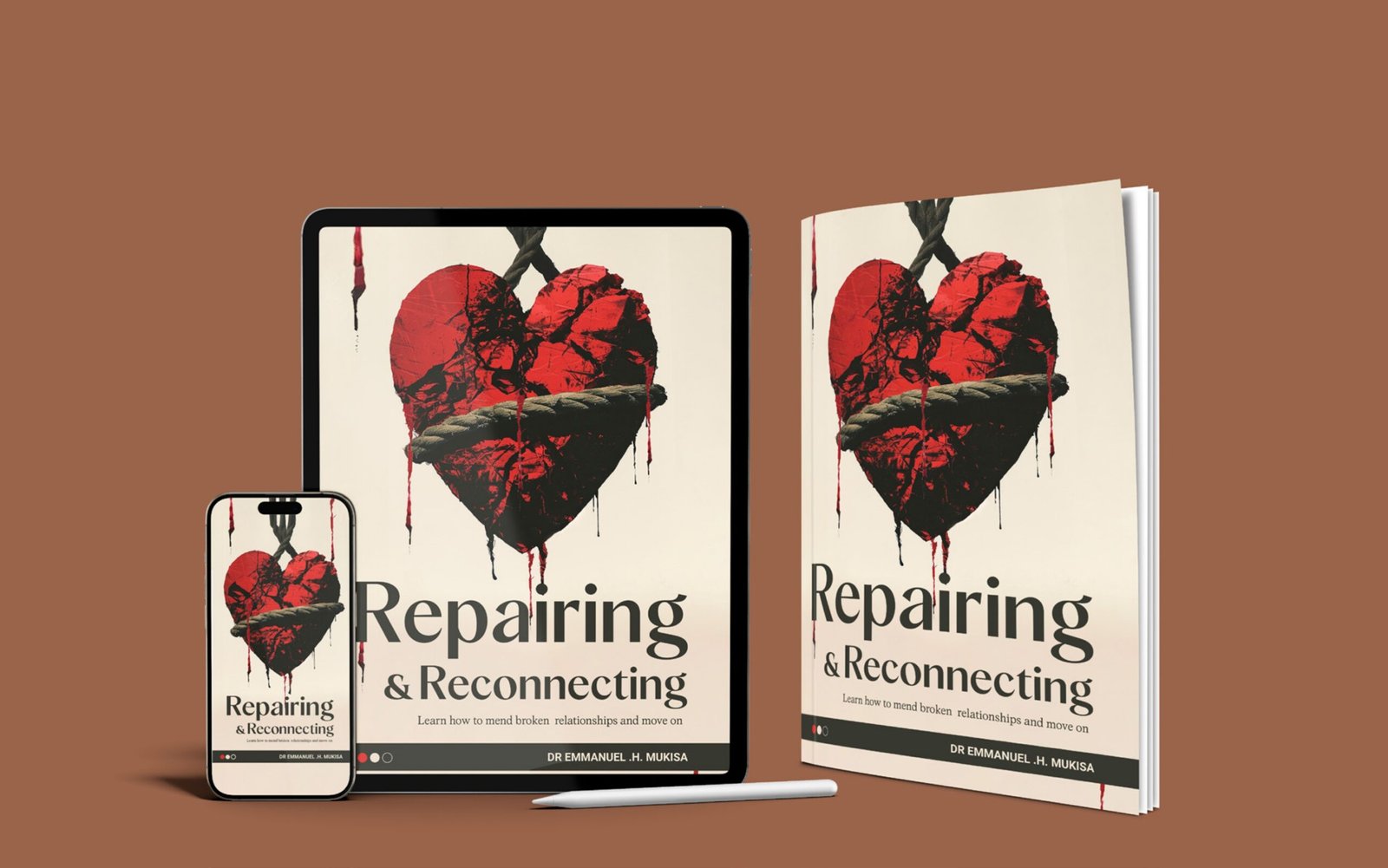![]()
![]()

Every relationship we hold dear is tested at some point. Words are said that wound. People who felt close become more distant. Sometimes it’s a dramatic break, a betrayal, or a blowup. At other times, the lack of connection sneaks in gradually, like a conversation that never takes place, or a silence that lasts too long. No matter how the distance evolved, repairing and reconnecting takes courage, patching things together slowly, quickly, and the courage to start over.
But know this: when two people are committed to showing up real, even the deepest cracks can be spaces of growth.” You’ve probably stored it as proof in the files that ought to be bursting with evidence that you will never be loved healthily or faithfully because you’re not worthy. This book, Repairing and Reconnecting, is about the mindset and the steps required to heal relationships: your partner, your friend, your parent, and even yourself.

Disconnection is hardly ever sudden. It accumulates through small acts, repeated patterns, or unsaid things. So the first step to repair and reconnect is to ask yourself a difficult question: When did the change begin, and what was my role in it?
At times, we decline love because we do not feel it or see it. At other times, we become absorbed in work, parenting, or our own interior life and fail to tend the bond. It’s not just one person who is off-base, but two people who have slowly grown apart. To acknowledge that quietly, without blame, is the foundation of restoration.
When a relationship feels broken, blame is easily thrown around. But healing starts with self-knowledge. Before facing another person, confront yourself. Consider whether you were emotionally accessible. Did I shy away from tough conversations? Have I been bottling up my resentment rather than verbalizing it?
This reflection enables you to approach the other undefensively. It also cultivates empathy; you begin to notice not just your hurt, but theirs as well. And that changes the tone from accusation to reconciliation.
Without emotional safety, no productive reconnection is possible. And that means both people feel free to speak openly, without fear of being ridiculed, diminishing what’s said, or being punished for what they say.
Making it safe to feel is about the small things and the repetition. The form it takes is listening without interrupting. It is the difference between “I get why that hurt you” and “That’s not what I meant.” It means respecting each other’s feelings, even if they make no sense to you.
When we feel a sense of safety and we can allow ourselves to be vulnerable, a real connection becomes possible again.
Trust is fragile. It can take years to construct and seconds to destroy. But shattered, it can still be repaired, over time, with effort. Trust is not rebuilt in a single conversation or apology. It is from showing up, over and over, with actions that follow your words.
You probably promised to be more supportive. Trust is created when you follow through; when you touch base, when you show up on time, when you keep your word. Perhaps you resolved to be more honest. Trust develops when you own up to hard truths, even if it feels icky.
“The most important thing is consistency, which a perfectionist will not be able to maintain.
Some apologies do not heal. A hurried “I’m sorry” that lacks sincerity can do more harm than good. A real apology is about owning it, not simply saying you’re sorry, but, more importantly, that you understand how the other person felt.
For instance, rather than “Sorry if I hurt you,” say, “I know my actions caused pain and I regret that. I would like to know how I can make it right.”
And most importantly, don’t pressure the other person to get over it. An actual apology allows space for their feelings without asking for a particular outcome.
Forgiveness is not the same thing as forgetting. It doesn’t mean the pain disappears. What it means is letting go of the need to retaliate and making room for peace to come in. It is a process, not a one-time decision.
If you are the one asking for forgiveness, be patient. Also, understand if they need time to trust the other person again. If you’re the one forgiving, remember it’s as much a gift to yourself as to the other person. It releases you from the burden of holding on.
Forgive the past, not for the sake of the person who hurt you, but for your peace of mind.
In broken relationships, people often stop asking questions. They assume. “She doesn’t care anymore.” “He believes he is always right.” “They never really loved me in the first place.” These are the stories that flourish in silence.
Reconnection is asking, not assuming. It’s asking, “Help me understand how you’re feeling,” or “What can I do for you right now?” Even if the answers are difficult to hear, asking is the opening to the truth, and truth is the opening to healing.
Once repairing and reconnecting begins, you’ll need new habits to keep it going. You can’t fix old wounds with the same old patterns. Instead of hoping things “just go back to normal,” create intentional rhythms of connection.
This might mean setting a time each week to talk, unplugging from distractions during shared meals, or planning regular time together even when life gets busy.
You might also agree to check in during hard weeks: “Is there anything we need to clear up between us?” These small moments prevent new misunderstandings from growing.
New patterns build a stronger foundation than the one that cracked.
One of the toughest truths of repairing and reconnecting is this: sometimes, people don’t change in the way that you want them to. But that does not mean connection cannot happen. Loving people for who they are now and not just how we remember them or wish they would be.
This is not to be mistaken for putting up with disrespect or neglect. It means practicing empathy. Seeing their growth. Releasing idealized versions and encountering the actual person in front of you.
That kind of acceptance creates the deepest kind of bond.
One cannot save every relationship single-handedly. Some wounds run deep. That’s when bringing in a neutral third party, a counselor or therapist, or spiritual leader, can make all the difference between talking in circles and moving forward.
Such professionals can help to sort through complex feelings, to steer conversations in constructive directions, and to provide the tools for rebuilding trust without blame.
Seeking help doesn’t mean your relationship is failing. It means you care enough to get support.
Despite best efforts, not all relationships can be restored. Sometimes the other person isn’t ready. Sometimes they’ve moved on. That’s painful, but not without purpose.
Even if reconciliation doesn’t take, you can still find healing by showing up as the best person you can be. Because you can make peace with knowing that you tried, you spoke honestly, with integrity, and you took responsibility.
In some cases, the healing comes from letting go, not rebuilding. And that’s okay.
